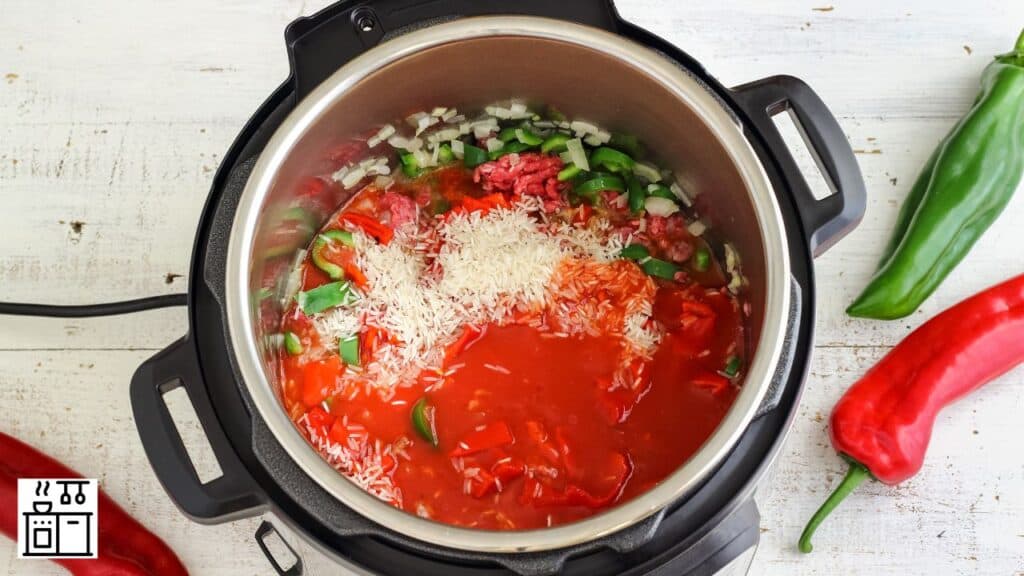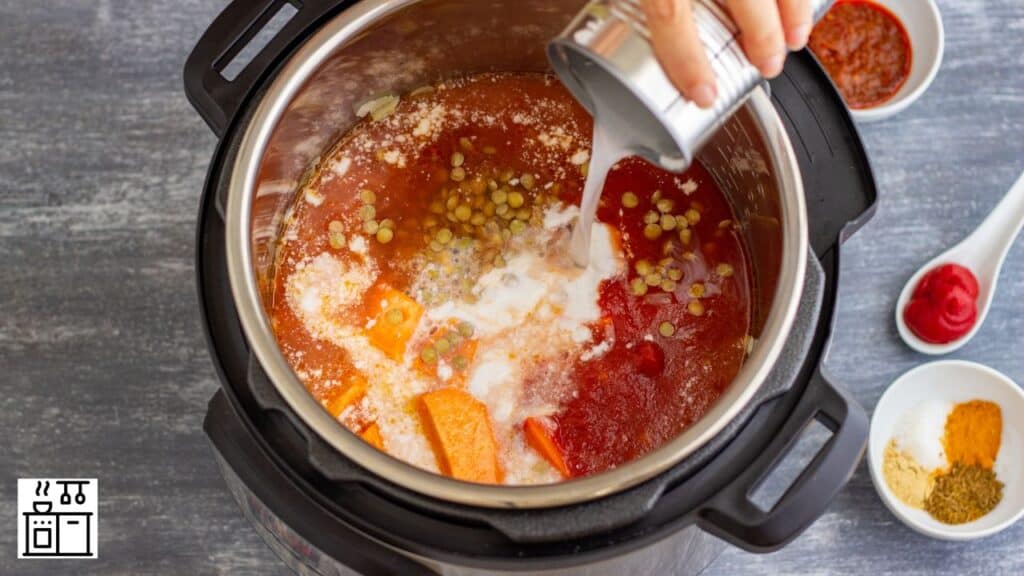A pressure cooker uses high-pressure cooking to speed up the cooking process.
It has a sealed chamber to trap the steam generated when the liquid boils. This trapped steam increases the pressure and helps to cook food quickly.
Here is what you should know about using a pressure cooker.
Types of Pressure Cookers
First-generation pressure cookers had a single pressure setting. So, they had limited functionality.
But the newer versions can accomplish much more.
There are different types of pressure cookers based on how they operate and the features they offer.
Let’s look at them in closer detail.
Single-Purpose Pressure Cookers
These pressure cookers are basic models with a single pressure setting. But you can still use them to make a wide variety of dishes.
Single-purpose pressure cookers can work on stovetops or electric stoves.
Multi-Purpose Pressure Cookers
These pressure cookers are more versatile than their single-purpose counterparts.
Multi-purpose pressure cookers can not only cook but also steam and sear food.
They have more parts and often feature a range of temperature and pressure settings.
Apart from using them for pressure cooking, you can also use them for slow cooking, steaming, and other needs.
Parts of A Pressure Cooker
Different types of pressure cookers will have different components. But, the integral parts of a pressure cooker remain the same.
They are as follows:
1. Lid
The lid of a pressure cooker carries the different pressure valves. These valves are important to keep the steam inside the appliance.
The valves resist the push of the steam, helping the appliance build high pressure inside the compartment.
It will also have a locking mechanism that ensures the pressure is trapped inside the cooker.
2. Cooking Pot
Cooking happens inside the cooking pot. It can be made of stainless steel or aluminum and may or may not have a non-stick coating.
The cooking pot rests inside an outer compartment in electric and modern pressure cookers.
In traditional stovetop versions, it’s usually the only part of the base of a pressure cooker.
The cooking pot will usually have indications that show the level beyond which you should not fill it with food.
3. Gasket
The gasket is a part of the locking mechanism. It creates an airtight seal between the lid and the cooking pot.
So, it traps the steam inside the pressure cooker, preventing it from releasing any steam.
Steps to Use a Pressure Cooker
Pressure cookers are different from slow cookers and rice cookers. Since they cook very quickly, there is little room for error.
Nevertheless, once you get the hang of using a pressure cooker, these appliances will be your trusted aides in the kitchen.
Here are the basic steps to using a pressure cooker correctly.
1. Understand What It Does
A basic understanding of the operation of a pressure cooker is essential to efficiently using this appliance.
When you turn the pressure cooker on, the contents start heating up. The liquid in it boils and evaporates.
However, the steam produced can’t escape because of the tight seal it creates. Instead, the temperature and pressure increase inside the sealed compartment.
The only outlet for steam is a tiny vent at the top of a pressure cooker. A weighted pressure regulator is placed on this vent.
In older pressure cookers, this regulator jiggles and releases steam when the pressure becomes high inside the compartment.
In newer systems, spring valves have replaced this detachable regulator.
2. Check the Pressure Cooker and Lid Before Use
A pressure cooker will not work properly if the gasket, pot, or lid are compromised.
It will also not function properly if food blocks the vents. So, check the pressure cooker for any leftover food or blockage before using it.
3. Add the Right Quantity of Food

Pressure cooking requires some sort of liquid. This can be water, milk, broth, or any other liquid.
You should not overfill a pressure cooker since there should be enough room for the steam to rise and build pressure for cooking.
Most pressure cookers have a maximum indication inside the cooking pot. You can use it to avoid overfilling the pot.
If this is unavailable, avoid filling more than 2/3rd of the cooker with liquid.
4. Prepare the Ingredients for Cooking
You must prepare the ingredients for cooking depending on the recipe and the type of pressure cooker you use.
- Season meat before placing it in the cooker. You can also lightly fry it to brown it on the outside.
- Seafood doesn’t need much preparation, apart from washing and cleaning it. Add enough liquid to the cooker to prevent it from sticking to the base.
- For beans and lentils, prior soaking is essential. The soaking time will vary according to the variety. Ensure that the beans are soaked for long enough to reduce the cooking time and ensure they cook thoroughly.
- Rice and grains may require soaking depending on the type and nature of the grain. Wheat and barley need to soak longer than long-grain rice. Short-grain rice and oats don’t need prior soaking. Refer to the package instructions for accurate directions.
- Vegetables and fruits don’t require any preparation. You can directly add them to the cooker.
5. Place the Cooking Ingredients in The Pressure Cooker
Add enough water for cooking into the pressure cooker, followed by the food to be cooked.
Remove the safety valve or disable the pressure regulator and close the lid.
Place the cooker on the stove or plug it in and set it to high heat. This will begin the cooking process.
Once the water boils and produces steam, the food will start to gently simmer.
When this happens, steam will start coming out of the vent. Place the safety valve on the nozzle.
6. Time the Cooker
At this stage, reduce the heat to low and let the cooker simmer. The intention of reducing heat is to allow the cooker to simmer and not whistle.
The cooker will start whistling when the pressure increases. This will bring down the pressure and slow down the cooking process.
So begin timing the cooker at this stage to maintain steady pressure.
You can turn off the cooker after the required time has elapsed. But don’t open it immediately. The pressure inside the cooker will still be high.
7. Release the Pressure
After switching off the cooker, release the pressure before opening the lid. There are a few ways to do this.
The first is to wait till the pressure is naturally released. It will take longer than other methods, but you don’t have to do anything.
Just wait for the cooker to release the built-up pressure by itself.
The next option is to press the quick-release button or raise the regulator to release pressure.
The fastest way to release pressure if you have an electric pressure cooker is to place it under a faucet.
Run cold water on the lid, and the pressure will fall.
When all the pressure is released, no steam will escape even if you jiggle the pressure regulator.
At this stage, you can remove the lid and take food out of the cooker.

